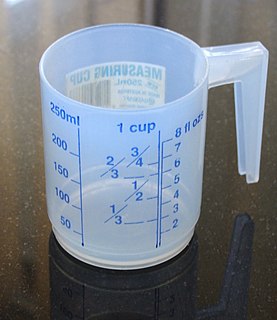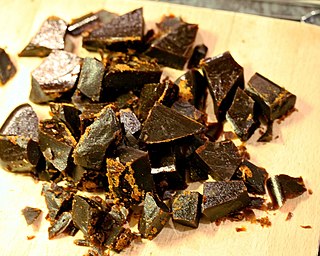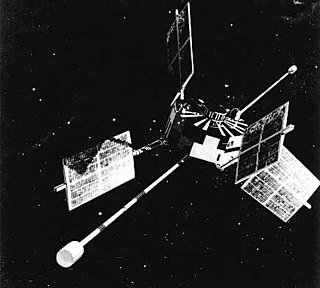External links
| This article about a publishing company is a stub. You can help Wikipedia by expanding it. |
| This Swedish corporation or company article is a stub. You can help Wikipedia by expanding it. |
This article is being considered for deletion in accordance with Wikipedia's deletion policy. Please share your thoughts on the matter at this article's entry on the Articles for deletion page. |
| Private | |
| Industry | Direct marketing Publishing |
| Founded | (1972) |
| Headquarters | Malmö, Sweden |
Key people | Alf Tonnensen, Founder/President |
| Revenue | More than $370 million per year |
Number of employees | 450+ (2007 statistics) |
| Website | IMP Online |
International Masters Publishers (IMP) is a publisher with activities in 35 countries. IMP creates and markets products within the areas of recipes and cookery, home and hobbies, entertainment, education and computers.
IMP was founded in 1972 and is privately held. The head office is in Malmö, Sweden. In 2007 the turnover was €260M and the number of employees 450.
IMP is related to the Cydonia Group, which includes Nationalencyklopedin, Bra Böcker, Stabenfeldt International, Fleur de Santé, Fyrklövern, My Great Recipes, Wildlife Explorer, History Explorer and Postpac.[ needs update ]
| This article about a publishing company is a stub. You can help Wikipedia by expanding it. |
| This Swedish corporation or company article is a stub. You can help Wikipedia by expanding it. |
IMP or imp may refer to:

The bouquet garni is a bundle of herbs usually tied together with string and mainly used to prepare soup, stock, casseroles and various stews. The bouquet is cooked with the other ingredients, but is removed prior to consumption. Liquid remaining in the bouquet garni can be wrung out into the dish.
Springer Science+Business Media or Springer, part of Springer Nature since 2015, is a global publishing company that publishes books, e-books and peer-reviewed journals in science, humanities, technical and medical (STM) publishing. Springer also hosts a number of scientific databases, including SpringerLink, and SpringerImages. Book publications include major reference works, textbooks, monographs and book series; more than 168,000 titles are available as e-books in 24 subject collections. Springer has major offices in Berlin, Heidelberg, Dordrecht, and New York City.

The cup is a cooking measure of volume, commonly associated with cooking and serving sizes. It is traditionally equal to half a liquid pint in US customary units, or between 200 ml and 250 ml in the metric system. Because actual drinking cups may differ greatly from the size of this unit, standard measuring cups are usually used instead.

Bonfire toffee is a hard, brittle toffee associated with Halloween and Guy Fawkes Night in the United Kingdom. The toffee tastes very strongly of black treacle (molasses), and cheap versions can be quite bitter. In Scotland, the treat is known as claggum, with less sweet versions known as clack. In Wales, it is known as loshin du.. The flavour is similar to that of butterscotch, although it is a toffee and never a viscous liquid.

Explorer 33 was a spacecraft in the Explorer program launched by NASA on July 1, 1966 on a mission of scientific exploration.

International Music Publications is a British publisher of popular sheet music.

Explorer 18, also called IMP-A, IMP 1 and S-74, was an American satellite launched as part of the Explorers program. Explorer 18 was launched on 27 November 1963 from Cape Canaveral, Florida, United States, with a Delta rocket. Explorer 18 was the first satellite of the Interplanetary Monitoring Platform.

The Bacon Cookbook: More than 150 Recipes from Around the World for Everyone's Favorite Food is a cookbook on bacon by James Villas. It was published by Wiley in 2007. Villas is a former food editor for Town & Country magazine, and The Bacon Cookbook is his 15th book on food. He notes on the book's jacket that he was "beguiled by bacon since he was a boy." He describes the appeal of bacon in the book's preface, and in the introduction recounts the history of the product, as well as its variations from different locations internationally. Chapters are structured by type of recipe and food course, and in total the book includes 168 recipes.
Gwaha-ju is a traditional Korean fortified rice wine. The refined rice wine cheongju is fortified by adding the distilled spirit soju to produce gwaha-ju. Popular varieties include gangha-ju (강하주) of Boseong and Yeonggwang in South Jeolla Province, sinseon-ju (신선주) of Namwon in North Jeolla Province, and yak-soju (약소주) of Suwon in Gyeonggi Province.

The history of Argentine cuisine is rich and diverse. As a land that has experienced extensive immigration through many years, the country has benefited from numerous food influences. The diverse climate in the region, ranging from subtropical to subpolar, has also helped considerably broaden the set of ingredients readily available. European settlers are largely responsible for Argentina's cuisine, mostly the Italians and Spaniards. However, other immigrants such as Germans, the French, Jews and the British, among others, brought their styles of cooking and national recipes with them. Nevertheless, indigenous gastronomies derived from groups such as the Quechua, Mapuche, and Guarani have also played a role; for example, mate is consumed throughout all the country.

The International Sun-Earth Explorer 1 was a 340-kg space probe used to study magnetic fields near the Earth. ISEE-1 was a spin-stabilized spacecraft and based on the design of the prior IMP series of spacecraft. ISEE-1 and ISEE-2 were launched on October 22, 1977, and they re-entered on September 26, 1987.
"The Bottle Imp" is the 7th episode of the supernatural drama television series Grimm of season 2 and the 29th overall, which premiered on October 12, 2012, on NBC. The episode was written by Alan DiFiore, and was directed by Darnell Martin.

Explorer 21, also called IMP-B and Interplanetary Monitoring Platform IMP-B, was an American satellite launched as part of Explorers program. Explorer 21 as launched on 4 October 1964 from Cape Canaveral, Florida, United States, with a Delta rocket. Explorer 21 was the second satellite of the Interplanetary Monitoring Platform.

Explorer 34, also called IMP-4 and Interplanetary Monitoring Platform IMP-F, was an American satellite launched as part of Explorers program. Explorer 34 as launched on 24 May 1967 on Vandenberg Air Force Base, California, United States, with Delta rocket. Explorer 34 was the fourth satellite of the Interplanetary Monitoring Platform.

Explorer 41, also called as IMP-G and IMP 5, was a U.S. satellite launched as part of Explorers program. Explorer 41 as launched on June 21, 1969 on Vandenberg AFB, California, United States, with a Delta rocket. Explorer 41 was the fifth satellite of the Interplanetary Monitoring Platform.

Explorer 43, also called as IMP-I and IMP 6, was a U.S. satellite launched as part of Explorers program. Explorer 43 as launched on March 13, 1971 on Cape Canaveral, with a Delta rocket. Explorer 43 was the sixth satellite of the Interplanetary Monitoring Platform.

Explorer 47, also known IMP-7 and Interplanetary Monitoring Platform IMP-H, was an American satellite launched as part of Explorers program. Explorer 47 as launched on 23 September 1972 on Cape Canaveral, Florida, U.S., with a Delta rocket. Explorer 47 was the seventh satellite of the Interplanetary Monitoring Platform.

Explorer 50, also known as IMP-J or IMP-8, was a NASA satellite launched to study the magnetosphere. It was the eighth and last in a series of the Interplanetary Monitoring Platform.